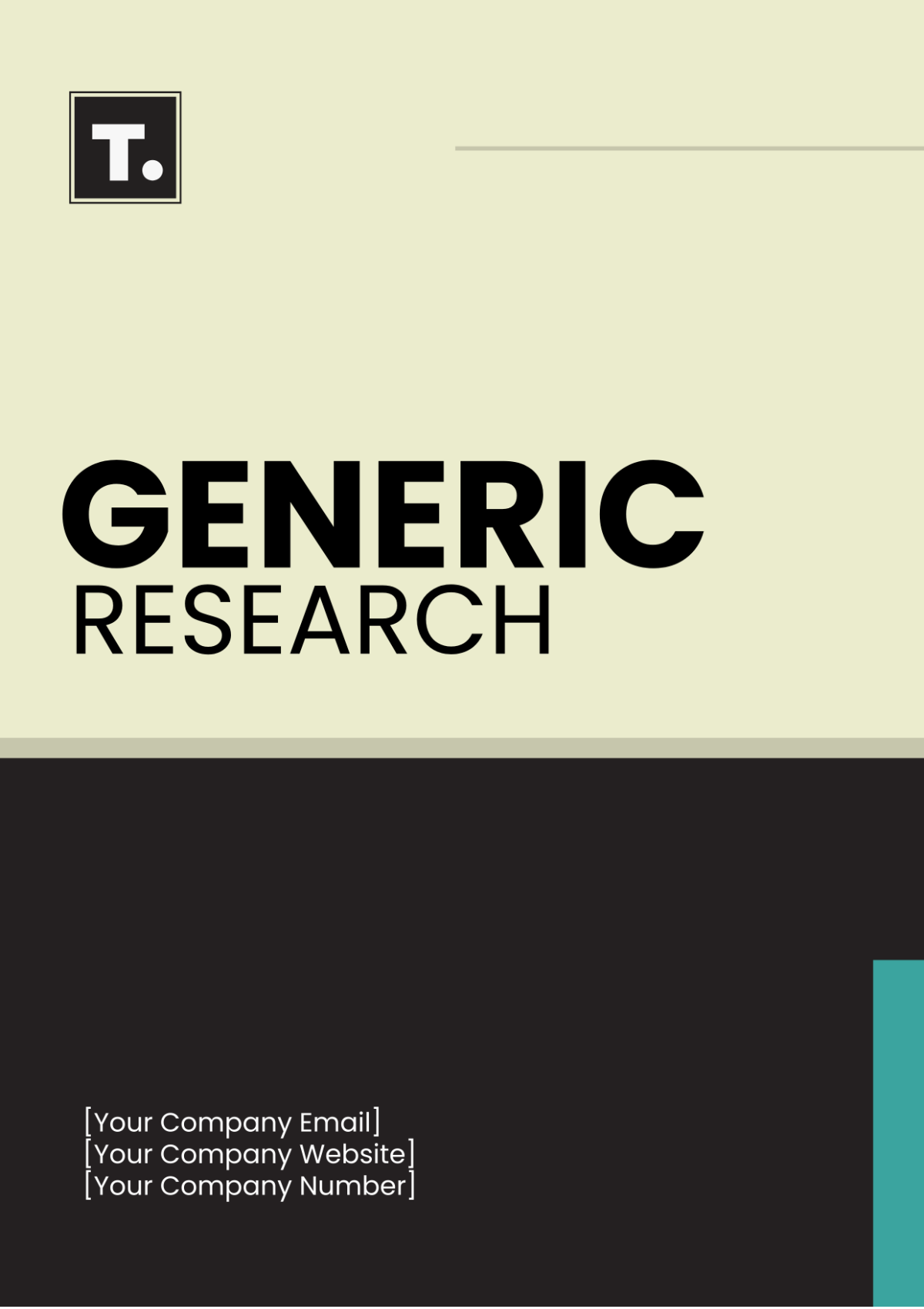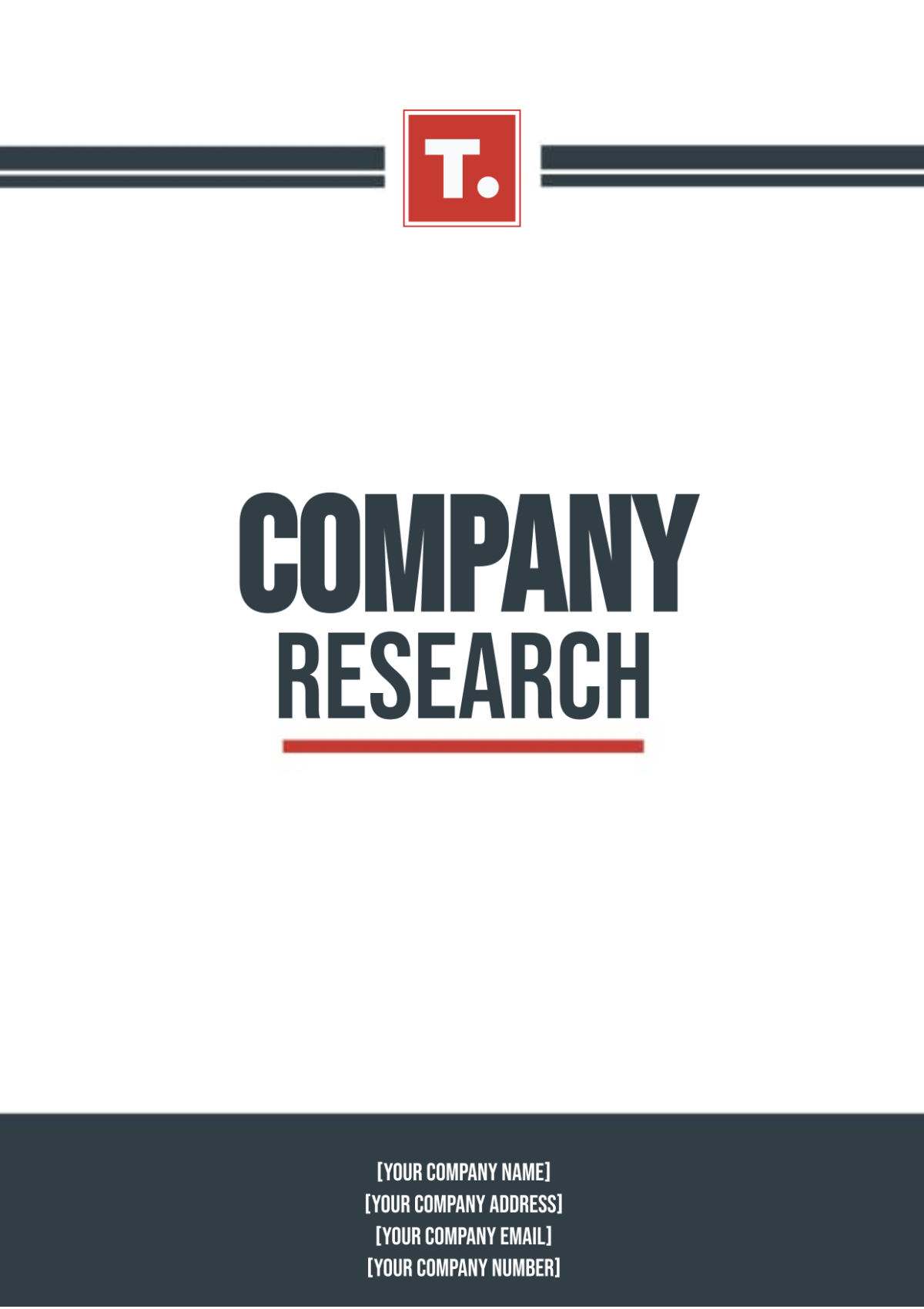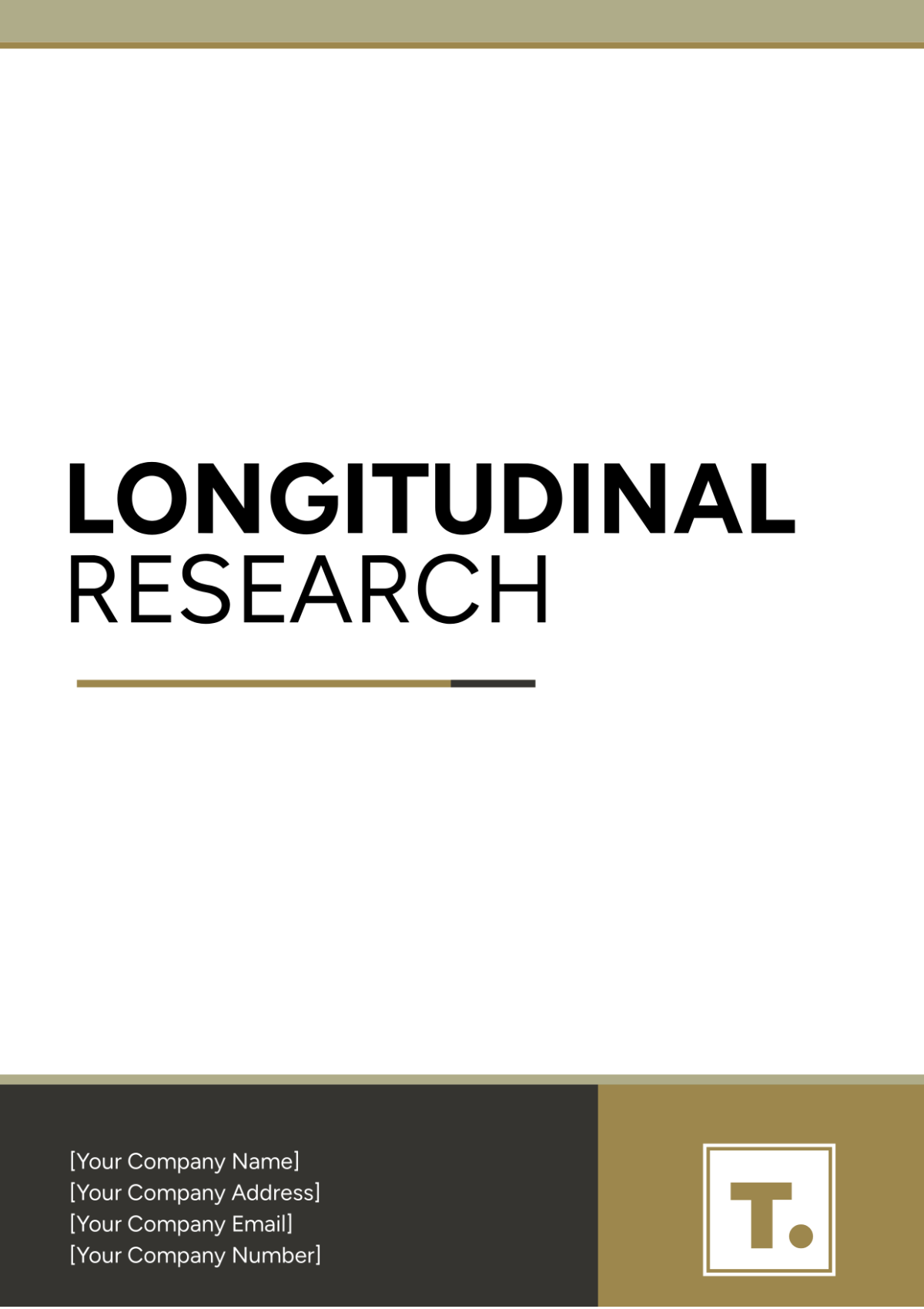Marketing Detailed Research On
Cost-efficient Strategies
EXECUTIVE SUMMARY
This comprehensive research report delves deep into the realm of cost-efficient marketing strategies to illuminate a strategic path for [Your Company Name]. In an era where maximizing returns on marketing investments is paramount, the primary goal is to uncover actionable insights that drive sustainable growth while maintaining fiscal prudence. The report unfolds a meticulous analysis of the most effective marketing strategies that have the dual ability to optimize resource allocation and produce compelling outcomes. Our findings are instrumental in steering the company towards a future where marketing is not only a driving force for growth but also an exemplar of financial efficiency.
RESEARCH OBJECTIVES
Our research is designed to fulfill several critical objectives:
Comprehensive Assessment of Current Strategies: We undertake an exhaustive evaluation of the existing marketing strategies employed by [Your Company Name]. This involves dissecting each strategy, examining its performance, and identifying areas where cost-efficiency can be enhanced.
Identification of Cost-Efficient Strategies: We aim to identify marketing strategies that are not only effective but also budget-conscious. We scour the marketing landscape to uncover industry best practices and proven tactics that offer the most bang for your marketing buck.
Recommendation of Strategies in Line with Company Goals: The ultimate objective is to recommend marketing strategies that seamlessly align with the specific goals and aspirations of [Your Company Name]. It's not just about being cost-efficient; it's about being cost-efficient with a purpose.
METHODOLOGY
In order to conduct this comprehensive research on cost-efficient marketing strategies for [Your Company Name], a multifaceted methodology was employed to ensure a thorough and data-driven analysis:
Literature Review: We initiated the research by delving into the extensive body of literature available on marketing strategies. This included academic research papers, industry reports, case studies, and publications from respected marketing experts. The aim was to gain insights into established best practices and emerging trends that have proven to be cost-efficient.
Analysis of [Your Company Name]'s Historical Marketing Data: We meticulously examined your company's historical marketing data, including past campaigns, expenditures, and performance metrics. This analysis allowed us to identify areas where cost-efficiency could be improved and provided a baseline against which the proposed strategies could be measured.
Interviews with Key Stakeholders: In-depth interviews were conducted with key stakeholders within your organization, including marketing teams, executives, and individuals responsible for decision-making in marketing budget allocation. Their input and perspectives were instrumental in understanding the current challenges and opportunities, as well as aligning the research with your company's goals.
Benchmarking Against Industry Competitors: To gain a competitive edge, we conducted benchmarking exercises against industry competitors. This benchmarking encompassed an analysis of your competitors' marketing strategies, budget allocation, and performance metrics. By evaluating how your competitors approach cost-efficient marketing, we were able to draw valuable insights and identify areas where your company could excel.
CURRENT MARKETING STRATEGIES
In this section, we delve into a comprehensive analysis of the current marketing strategies implemented at [Your Company Name]. It is essential to gain a clear understanding of the existing strategies, their strengths, and any areas that may need improvement.
Digital Advertising
MARKETING CHANNEL | ALLOCATION ($) | KEY METRICS | STRENGTHS | WEAKNESSES |
Google Ads | 20,000 | CTR, Conversion Rate, ROI | Effective lead generation | High CPC costs |
Strengths:
Effective lead generation through Google Ads.
Wide audience reach on Facebook Ads.
Targeted B2B lead generation on LinkedIn.
Weaknesses:
High CPC costs on Google Ads.
Increasing competition on Facebook.
High ad costs on LinkedIn.
Content Marketing
STRATEGY | ALLOCATION ($) | KEY METRICS | STRENGTHS | WEAKNESSES |
Blogging | 10,000 | Traffic, Engagement | SEO benefits | Resource-intensive |
Strengths:
SEO benefits from blogging.
Visual appeal and backlinks from infographics.
High engagement with video content.
Weaknesses:
Resource-intensive blogging.
Limited topic coverage in infographics.
Production costs for video content.
Email Marketing
STRATEGY | ALLOCATION ($) | KEY METRICS | STRENGTHS | WEAKNESSES |
Newsletter | 7,000 | Open Rate, Click-Through Rate | Effective communication | List fatigue |
Strengths:
Effective communication through newsletters.
Personalization and lead nurturing in drip campaigns.
Promoting products through announcements.
Weaknesses:
List fatigue in newsletters.
Time-intensive nature of drip campaigns.
Content creation challenges in product announcements.
Social Media Marketing
PLATFORM | ALLOCATION ($) | KEY METRICS | STRENGTHS | WEAKNESSES |
10,000 | Engagement, Follower Growth | Wide audience reach | Algorithm changes | |
Strengths:
Wide audience reach on Facebook.
Real-time engagement on Twitter.
Visual content appeals on Instagram.
Weaknesses:
Algorithms change on Facebook and Instagram.
Limited character count on Twitter.
Trade Shows and Events
EVENT TYPE | ALLOCATION ($) | KEY METRICS | STRENGTHS | WEAKNESSES |
Conferences | 20,000 | Lead Generation | Industry networking | High costs |
Strengths:
Industry networking in conferences.
Product showcase in exhibitions.
Cost-effective lead generation through webinars.
Event-specific ROI in sponsorships.
Weaknesses:
High costs in conferences.
Resource-intensive nature of exhibitions.
Audiences reach limitations in webinars.
COST-EFFICIENT STRATEGIES
In this section, we delve deeper into the identified cost-efficient marketing strategies, highlighting their key components and advantages for [Your Company Name].
Content Marketing
Content marketing is a foundational strategy for achieving long-term cost-efficiency. By creating high-quality, informative, and evergreen content, [Your Company Name] can nurture customer relationships, build brand authority, and drive organic traffic. The cost-efficiency of content marketing is rooted in its ability to generate consistent returns over an extended period.
Recommendations:
Develop a well-structured content calendar to ensure regular content output.
Focus on creating informative and engaging blog posts, videos, and infographics.
Promote content across various channels, such as social media and email newsletters, to maximize reach.
Email Marketing
Email marketing is a targeted and cost-effective means of engaging with leads and customers. By segmenting your email lists and tailoring content to specific groups, [Your Company Name] can achieve high open and click-through rates, driving conversions. The efficiency lies in its ability to deliver personalized messages that cater to individual preferences and behaviors.
Recommendations:
Implement email segmentation to send tailored messages.
Create compelling and valuable email content.
Automate email sequences for lead nurturing and customer retention.
Social Media Advertising
Social media advertising offers a cost-effective way to reach a vast and targeted audience. By selecting the right social media platforms and strategically crafting ad campaigns, [Your Company Name] can maximize brand exposure while keeping ad spend in check.
Recommendations:
Carefully choose the social media platforms that align with your target audience.
Craft visually appealing ad creatives with compelling ad copy.
Utilize cost-effective ad formats, such as carousel ads or video ads.
Influencer Partnerships
Leveraging micro-influencers can be a cost-efficient approach to promoting your products or services. Micro-influencers have niche followings, which often lead to more engaged and authentic promotion. Collaborating with them is often more affordable than partnering with macro-influencers.
Recommendations:
Conduct thorough influencer research to identify the right micro-influencers.
Establish clear partnership agreements, ensuring transparency and authenticity.
Encourage micro-influencers to create user-generated content for additional cost savings.
SEO Optimization
Search Engine Optimization (SEO) is a vital cost-efficient strategy that increases organic website traffic. By optimizing on-page and off-page elements, [Your Company Name] can improve search engine rankings, leading to sustainable, cost-effective results.
Recommendations:
Conduct a comprehensive SEO audit to identify optimization gaps.
Focus on keyword research, high-quality content, and backlink building.
Regularly update and maintain website content to stay in line with search engine algorithms.
IMPLEMENTATION RECOMMENDATIONS
1. Content Calendar
Develop a well-structured content calendar to maintain a consistent content output schedule. Plan in advance, focusing on relevant and valuable content that resonates with the target audience. This strategy ensures that resources are efficiently allocated to high-impact content and minimizes last-minute, costly content production.
2. Email Segmentation
Implement an advanced email segmentation strategy to personalize communication with subscribers. Divide your email list into distinct segments based on demographics, behavior, and preferences. Tailor your email campaigns to each segment's specific needs, increasing open rates, click-through rates, and overall campaign effectiveness. This approach maximizes engagement and minimizes unnecessary emails to uninterested recipients, reducing costs.
3. Platform Selection
Carefully evaluate the selection of social media platforms for marketing campaigns. Conduct audience research to identify where your target demographic is most active. Focus your resources and efforts on platforms with the highest potential for engagement and conversion. By concentrating your marketing on the most effective channels, you optimize budget utilization while achieving better results.
4. Influencer Research
Extensive research is critical for identifying suitable micro-influencers for partnerships. Evaluate potential influencers based on their authenticity, audience demographics, and alignment with your brand. Forge collaborations with micro-influencers who resonate with your brand's values and have an engaged audience. This cost-effective approach leverages the influencer's credibility to drive conversions without the high costs associated with macro-influencers or celebrities.
5. SEO Audit
Conduct a comprehensive SEO audit to identify and rectify optimization gaps. Analyze on-page and off-page elements, such as meta tags, keywords, backlinks, and site structure. Optimize your website for search engines to increase organic traffic.
EXPECTED OUTCOMES
Upon successful implementation of the recommended cost-efficient marketing strategies, [Your Company Name] can anticipate several positive outcomes:
Increased Cost-Efficiency: By focusing on strategies that offer maximum ROI, [Your Company Name] will significantly reduce marketing expenses while achieving the same or higher impact.
Improved ROI and Conversion Rates: The emphasis on personalized content, optimal platform selection, and influencer partnerships will result in higher conversion rates, leading to a stronger return on investment.
Enhanced Brand Visibility and Customer Engagement: The adoption of these strategies will enhance brand visibility through consistent content, personalized communication, and engagement on relevant platforms. Increased customer engagement fosters stronger relationships and brand loyalty.
CONCLUSION AND ONGOING IMPROVEMENT
Continuous Improvement
Emphasize the importance of continuous improvement. Marketing strategies and cost-efficiency techniques evolve over time. Regularly revisit the research and update the strategies as needed.
Feedback Loops
Implement feedback loops within the marketing team and from customers to gain insights into the effectiveness of the strategies. Encourage open communication to identify areas for improvement.
Learning and Training
Invest in the training and development of the marketing team to ensure they stay updated with the latest cost-efficient marketing practices. Attend industry conferences and workshops to stay informed.
This Marketing Detailed Research on Cost-Efficient Strategies equips [Your Company Name] with a comprehensive and adaptable plan to enhance cost-efficiency and marketing effectiveness. By closely monitoring performance and fostering a culture of continuous improvement, the company can achieve long-term success and stay competitive.
Date: [Month Day, Year]

















































